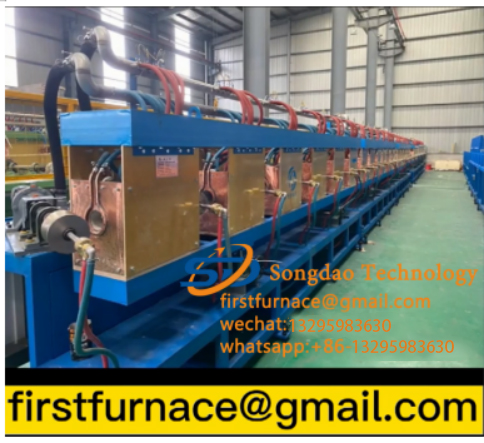- 20
- Dec
What is induction hardening heat treatment?
What is induction hardening heat treatment?
1. Prensîbên bingehîn
Tevgera hişk is to use the principle of electromagnetic induction to place the workpiece in an induction coil made of copper tube. When alternating current is applied to the induction coil, an alternating magnetic field with the same internal current frequency will be generated in and around it. If the workpiece is placed In a magnetic field, an induced current is generated inside the workpiece (conductor), and the workpiece is heated due to resistance. Due to the “skin effect” of alternating current, the current density near the surface of the workpiece is the largest, while the current in the core of the workpiece is almost zero. The surface temperature of the workpiece can reach 800-1000 degrees Celsius within a few seconds, while the core is still close to room temperature. When the surface temperature rises to the quenching temperature, spray cooling immediately to quench the surface of the workpiece.
2. Features of induction heating
A. Because the induction heating is extremely fast and the degree of overheating is large, the critical point of the steel is increased, so the induction quenching temperature (workpiece surface temperature) is higher than the general quenching temperature.
B. Due to the fast induction heating, the austenite crystals are not easy to grow. After quenching, a very fine cryptocrystalline martensite structure is obtained, which makes the surface hardness of the workpiece 2-3HRC higher than that of ordinary quenching, and the wear resistance is also improved.
C. After surface quenching, the volume of martensite in the hardened layer is larger than the original structure, so there is a large residual stress in the surface layer, which can significantly improve the bending resistance and fatigue strength of the parts. Small size parts can be increased by 2-3 times, large size parts can be increased by 20%-30%.
D. Because the induction heating speed is fast and the time is short, there is no oxidation or decarburization after quenching, and the deformation of the workpiece is also very small. After induction hardening, in order to reduce the quenching stress and reduce brittleness, low temperature tempering at 170-200 degrees Celsius is required. Larger workpieces can also be self-tempered using the residual heat of the quenched workpiece.

